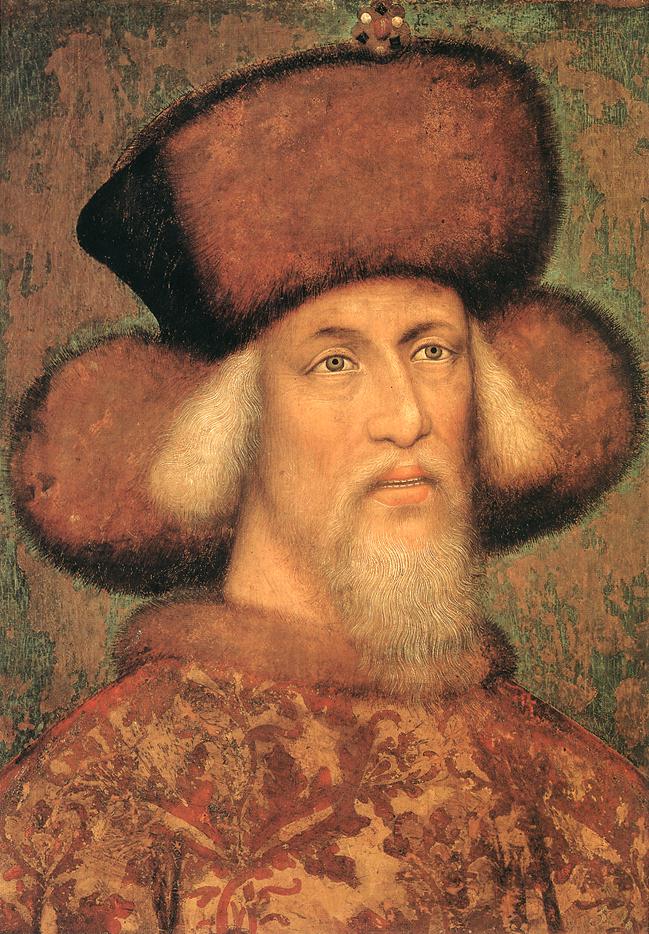Sigismund of Luxembourg was born in 1368, as the son of Charles IV.
Louis the Great had no male successor, so his daughters, Hedwig and Mary, inherited the throne. Mary became the queen of Hungary, and Hedwig became the ruler of Poland. With this, the personal union of the two states was terminated. This could only be resolved by asking for Mary's hand in marriage, since whoever wins it will be the ruler of Hungary. The queen's hand eventually became Sigismund's, along with the title of ruler.
In the Middle Ages, most German rulers sought to make Hungary a part of their empire. The goal of Sigismund of Luxemburg was just the opposite: he wanted to acquire the German royal title as king of Hungary. In 1410, he succeeded under dubious circumstances. From then on, he was considered a very important person in pan-European politics. In 1414, he convened the Council of Constance, which primarily settled the situation of the papacy, and Martin V was elected pope. In addition to his pan-European policy, his urban development policy was also influential, as his measures flourished the culture of cities and increased their rights. In 1395, the University of Óbuda was founded, and from 1408, Buda became the seat of the royal court.
He succeeded in achieving his real goal in 1433, when he was crowned German-Roman Emperor. He died in 1437 without a son, so his daughter's husband, Albert Habsburg designated as his heir.
Queen Mary's husband, Sigismund of the House of Luxembourg, minted coins different from his predecessors in many respects. The four elements of the coat of arms appear on the coins: a combination of the alternating Hungarian stripes and the Luxembourgish eagle, and the Hungarian stripes and the Czech lion. On the gold coins, there are Arabic numerals under the feet of Saint László, specifically the numbers 5, 6, 7 and 13, these can be considered as check marks. It is important to note that these are the first Arabic numerals to appear in Christian coinage. As for the types of money, small coins made of bad silver known as quartings (viertling, Hungarian fitying) were minted during Sigismund's reign. In the same period, the first piefort coins (thick minted coins) appeared, which served as test mints. Regarding the shape of the shield, during Sigismund's reign, the German shield with a round bottom came to the fore, instead of the Italian shield with a pointed bottom, and the Hungarian stripes appeared on a separate shield and on one side of the coin, while on the other side, the double cross filled the field. In terms of the coin material, among the coins of King Sigismund, we can first find copper coins, in the era of the Mixed House kings. Hungarian King Sigismund II of 1405. decree fixed the forint calculation, which ordered that the forint may only be calculated in gold forints or hundred-denarius forints. By the end of Sigismund's reign, Hungarians were already counting exclusively in forints and royal denarii.

 Czech
Czech  Slovenčina
Slovenčina  Română
Română  Polski
Polski  Español
Español  Français
Français  Italiano
Italiano  Magyar
Magyar  English
English  Deutsch
Deutsch 